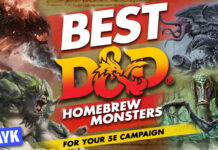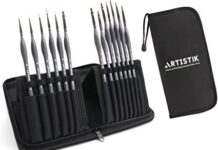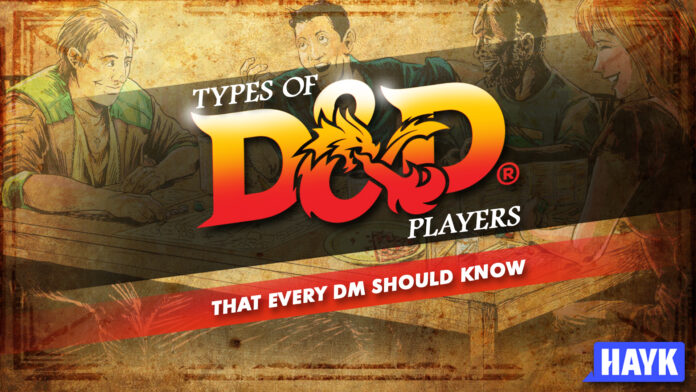
In Dungeons and Dragons, there are classifications for everything. Monster types, spell schools, item rarity, and tiers of play are great examples. Among the common classifications, however, the types of D&D players are often overlooked. Everyone wants to rush to the tavern after Session Zero.
Aside from being a nice table topic, your knowledge of D&D player archetypes will ensure the stability of your campaigns. Plus, your players will appreciate that you can understand them.
Contents of this Page
D&D Player Archetypes – Overview
The Rules Lawyer

D&D is a game about narratives, numbers, and rules. If a DM can balance all of the mentioned factors, everyone will have a great time. However, one infamous type of player that can ruin such a balance is the Rules Lawyer.
The Rules Lawyer cares about the strict implementation of rules. He adheres to the core rulebook, especially if the table runs a published adventure. Even if narration supersedes rules, the Rules Lawyer will fight tooth and nail to win an argument. The DM will always have the final say, but the Rules Lawyer will soon find new loopholes to exploit.
On a positive note, a Rules Lawyer can help the DM with confusing situations like spell effects, multiclassing, environmental hazards, and extraplanar shenanigans.
How to Deal With The Rules Lawyer
If your table has a Lawyer or two, the real solution that you can apply is open negotiation. Relay the current situation properly, and assess all important factors. Use a whiteboard or a long sheet of paper if possible.
Don’t be the egoistic DM! During a rules discussion, set your ego aside and consider the points relayed by the Lawyer player. Maybe the points will make a difference in the long run. Always remember that the player is not attacking you but rather trying to gain an upper hand in the game. Besides, all respectful players know that the DM’s word is final.
What if the Lawyer is actively hindering the game with unnecessary rule-talk? Well, just call the player out. One warning is enough and two is too much. The same thing applies if the Rules Lawyer doesn’t agree on anything.
The Nostalgic One
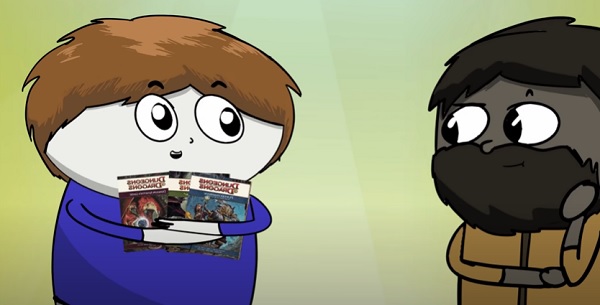
While other players care about the current session, the Nostalgic One thinks about the wonders of previous D&D editions. They love to mull about deadlier encounters, lots of crunchy mechanics, overly detailed stat blocks, and crazy number-packed builds. Some nostalgic players even recall the dreadful days of the THAC0 (the descending and confusing armor class formula).
Nostalgic players also have a big global community known as OSR or Old School Revival. The members of this community relive the old days by sharing classic dungeon maps and OSR supplements.
The nostalgic player is not necessarily bad for the table but he might cause slowdowns because of possible debates. These debates happen whenever there are conflicts with rules or if a DM is using an old and strict system like D&D 2E or 3.5.
How to Deal With the Nostalgic One?
Great memories are important for the nostalgic player. These memories include awesome combat or roleplaying encounters, epic character development, and hair-raising plot twists. If you want to work properly with a nostalgic player, you need to ask him about specific D&D memories. Let the player share his tales.
Afterwards, try to analyze the tales shared by the nostalgic player. Figure out if the moments will serve your table well, and don’t hesitate to trim unnecessary parts. If you do it right, the nostalgic player will enjoy your game and other players will also admire your ingenuity.
The Total Beginner
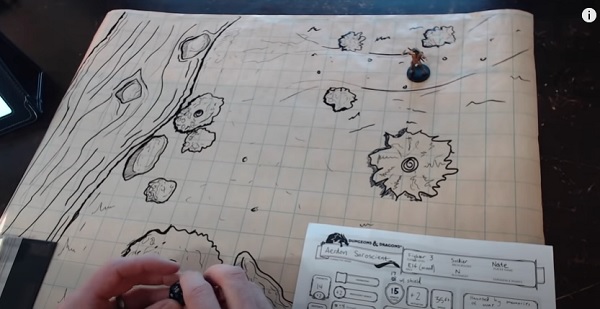
Dungeons and Dragons had an explosive comeback because of numerous factors like Critical Role, social media, and massive content-sharing communities. Plus, the world has become more appreciative of the nerd culture, erasing the hard years of social stigma. Today, everyone has the chance to become an adventurer.
Nowadays, you’re very likely to encounter a type of player known as the total beginner. This player simply knows D&D as a brand name and will probably have a hard time making his character sheet. Fortunately, you can access a trove of beginner resources on the official D&D website called D&D Beyond. The site has an automatic character creator and a big library of published and homebrewed content.
You should expect that a table with a few beginners will turn up slow. Beginners will ask questions about rules, combat mechanics, spell functions, and the numbers on their character sheets. Always remind these beginners to not forget their proficiency bonus!
How to Deal with the Total Beginner?
Dealing with a total beginner is a matter of patience. You need to ensure that all rules are easy to understand. Or better yet, don’t include too many rules in your campaign! D&D can overwhelm a lot of beginners, so just pick the bare necessities.
Here are some ruling essentials that you must cover:
- Character creation
- Class features and subclasses
- Quick combat rules
- Spell basics (Level 3 spells at least)
- Items and their functions
- Roleplay cheat sheets
Outside the campaign, you must also assist beginners in using online tabletop tools such as Roll20, Foundry, or Owlbear Rodeo. Take note that assisting beginners will eat up a large chunk of your prep time.
You can also use index cards filled with specific rule items to help players save time. Instead of glossing over a 300-page handbook, players can just scan the index cards that you’ve prepared. In online platforms, post-its and embeddable reminder notes will also do the job.
The Minmaxer
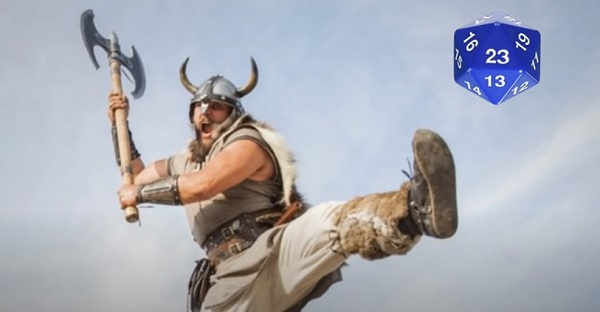
In gaming, minmaxing is the process of adjusting stats to attain a high degree of efficiency. Minmaxers typically end up with characters that can breeze through combat encounters. Some minmaxed characters are also great for roleplaying while sucky at everything else.
The minmaxer can derail any campaign as his character acquires many skills and chances for growth. One good example is an old-school character from D&D 3.5. The minmaxed character can achieve remarkable feats such as super-grappling or unlimited ammo. In 5E, broken builds are less common but minmaxers will usually find ways to circumvent a table’s rules.
How to Deal with The Minmaxer?
It’s tricky to handle a minmaxer because he might deny the allegation. Plus, he can also claim that everything that he’s doing is legal. The first thing that you can do is to set expectations even before the first session. In Session Zero, try to learn about your players’ goals and aspirations for their characters. This will help you understand the motivations of all players, especially minmaxers.
In terms of combat, you can reduce the chance of minmaxing by shuffling monster stat blocks. Don’t use monsters from the Monster Manual right away. You can freely edit monsters’ attributes and surprise minmaxers with a new attack combination.
The narrative is also the bane of die-hard minmaxers. Since D&D isn’t just about combat, you can weave new plot threads resulting from a minmaxer’s action. Maybe you can throw in a hungry purple worm if the players are fond of leaving corpses behind. Or perhaps some disgruntled city watch guards can put hefty bounties on the players’ heads.
The Roleplayer
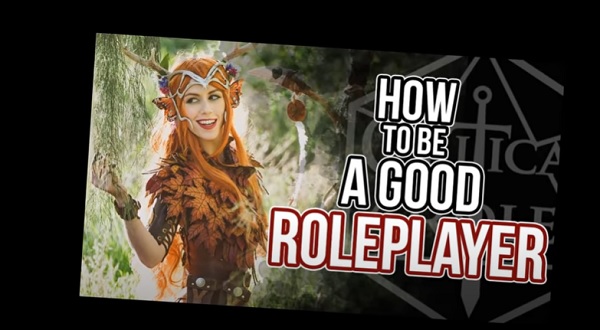
Playing D&D without any sense of roleplaying is a waste of time. If players don’t roleplay even for a tiny bit, they’re better off playing a video game. Thanks to the growing popularity of D&D, you can always find dedicated roleplayers with two or more characters ready.
Roleplayers can bring mostly positive things to your table. They can add color to all encounters, whether combat or non-combat. Plus, roleplayers will always align to your campaign’s story as long as they can feel their characters’ progress.
One small problem with roleplayers is the fact that their actions take too much time. Perhaps an overzealous Paladin player loves to declare his loyalty to Tyr. Or a passionate Tiefling Rogue starts her morning with a 30-minute tearful prayer to Asmodeus. As a DM, you have to prepare for moments like these.
How to Deal With The Roleplayer?
A good DM will always appreciate the input of passionate roleplayers. But if roleplaying is hindering campaign progression, you must do something. One thing that you can do is implement subtle deadlines. These deadlines can take the form of crucial quests or specific narrative requirements. Through a well-written NPC, you must explain the risks of not meeting the goals.
To speed up roleplayed combat encounters, just use a stopwatch. Tell your players that each turn is on a timer and that there are other chances for roleplaying later.
The Murder Hobo
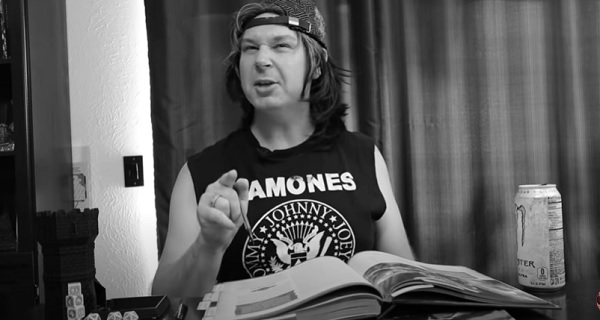
Some players just want to have an awesome tabletop gaming session. However, others have the sinister desire to wreak havoc and kill everything that moves in your campaign. These players are infamously known as murder hobos.
As terrible as the title sounds, a murder hobo is not good for most campaigns. Even evil campaigns need a break from killing and chaos or everything will fall apart.
Murder hobos can also ruin a party’s cohesion, eventually leading to unnecessary arguments, stealing, and enmity among players.
How to Deal With A Murder Hobo?
There’s no other way around this but to politely decline a murder hobo’s spot at your table. If that murder hobo is a friend, you can discuss the matter and emphasize your goal of running a smooth campaign.
What if a player became a murder hobo throughout the campaign? In this case, you should consider several narrative actions. A player causing too much chaos will attract the sharp edge of the law or other distasteful enemies. Other players will prevent this from happening, and they might betray the murder hobo just to save the group. You just need a powerful NPC or a faction determined to weed out troublemakers.
The Importance of Understanding Player Archetypes
D&D player archetypes have been around since the hobby’s early conception. As companies published many materials, the number of archetypes has also increased.
Understanding player archetypes will improve your DMing style gradually. You’d no longer fumble whenever the rules lawyer presented a confusing situation. You can even find new ways to keep players focused on the main quest.
Here are some benefits of understanding the types of D&D players:
Easier Narrative Adjustments
If you’re aware of the most common D&D player archetypes, you can adjust the narrative easily. Imagine that your table consists of minmaxers and roleplayers. Since you’re aware of the archetypes, you can prepare scenes with a balanced amount of roleplay and combat. This will keep combat encounters fresh and exciting without bogging down story progression.
It’s also easier to craft scenes if you know the archetype ratio of your table. A table with multiple beginners, for example, must have a manageable number of conflicts compared to a table with veterans. The reason being is that veterans already know their way around many sticky situations.
Flexible Combat Options
Player archetypes affect combat strategies in many possible ways. By simply jotting down player archetypes, you can prepare a decent combat encounter with lots of options for both sides.
For the minmaxers in your table, try adding variant monsters to test their builds. These variant monsters should have dangerous attack combos or capabilities to lay traps. For murder hobos, a sensible relay of combat punishment will do. You can always add extra layers of resistances or conditional immunities. Or maybe you should just include a last-stand explosion triggered by hasty attacks.
Combat options for roleplayers require a deeper sense of creativity. You need a pivotal hook within the encounter such as a damsel-in-distress or a collapsing archway that can kill a party member.
For the other player archetypes, you just need revised classic monsters (i.e. 5E kobolds), deep tactics, and dynamic combat environments. You can find these options in popular RPG forums like RPG.net, D&D Beyond Community, and Enworld.
Better Rewarding System
Not all D&D players expect the same rewards. Some prefer the bling of coins and treasures while others care about strong magical weaponry. While you can distribute many randomly generated treasures for your players, a custom rewarding system will lead to more exciting moments.
By taking account of the player archetypes in your table, you can add remarkable treasures. Forget about that jade elephant or a leather pouch of 20 silver coins. Why not shake things up with a potential story item? Or you can pick an innocuous yet valuable item from past D&D editions. You can even compile these treasures into a list of preferred rewards for every player archetype. The process won’t take long because there are thousands of reward ideas that you can find online.
Finding Published Materials is Easier
The Internet is filled with lists of top-rated yet confusing published materials. Instead of sorting out the lists and following one, you can analyze the player types in your table first. Next, pick a ranking factor from any adventure list and match it with your players’ profiles.
Social media is also a great place where you can gather reviews of D&D adventure books. Most of these reviews are from satisfied or disappointed players who want to make a point. Watch out for terms like beginner-friendly, difficult, meat grinder, XP machine, and old-school.
Watch this video so you can prepare a list of popular D&D books within the next ten minutes.
Improved Level of Communication
Just like most things in life, communication is essential in D&D. Without a clear medium of communication, players might end up confused about a particular rule or scenario. And even if you have the best platform, miscommunication is still a possibility.
You can reduce the chance of miscommunication by knowing what makes a specific player tick. Since player archetypes are just ‘grouped attitudes,’ you’ll know how to react whenever a situation appeared. Archetypes pave the way to better communication, and they’re also crucial in forming solid friendships.
Bonus Tip: Zero Down on Session Zero
Session Zero is the factor that will make or break your campaign. This is the big chance that will allow you to oversee big problems like hidden minmaxers, deceptive murder hobos, and obsessed rules lawyers. Your players also deserve to know if your campaign has some sensitive aspects like racism, slavery, or taboo practices.
Preparing a Session Zero isn’t too hard but it involves a lot of data-checking, adjustments, questioning, and patience. It’s better to have a long prep time than compromise the campaign later on.
These are the factors that you should include in your Session Zero checklist:
- Milestone or XP Leveling
- Campaign Themes Explored
- DM’s Behavior Expectations
- Player’s Behavior Expectations
- Gadget Limitations
- Turn Timers
- PVP and Secret Interactions
- Character Goals and Aspirations
- Player Motivations
- Character Creation Process
- Race Limitations
- Class Limitations
- Campaign Length
- Death and Debilitation
- Maximum Party Size
- Romance Considerations
- Feats, Rewards, and Inspiration
- Downtime
- Lore
- World Magic
- Spell Complexity
- Custom Spell Creation (Ars Magica style)
- Extraplanar Limitations
In your Session Zero checklist, you must prioritize Player Motivations. Ask your players about their ‘deepest desire’ and what they intend to achieve in your campaign. This questioning process isn’t always foolproof but it’s better than none.
Once you’re done questioning your players, give them the spotlight. They should have questions about the campaign or the points that you’ve introduced. If the players don’t have questions, that’s usually a bad sign.
To make the documentation easier, try embedding your Session Zero notes on your chosen platform. One platform that handles note-taking properly is Roll20. The site has an organized journal system that everyone can access as long as there’s permission. Discord is another reliable platform with separated channels and categories. However, the channels feel cluttered over time unless admins do a cleanup.
FAQ About D&D Players
Which published adventure is the best for beginners?
Answer: Hands down, the best published D&D material for beginners is the Lost Mine of Phandelver. It has a decent balance of danger, intrigue, rewards, and opportunities for roleplaying. However, LMOP needs an experienced DM who can tweak combat encounters easily to avoid unnecessary TPKs (Total Party Kills).
What are the essential D&D books for beginners?
Answer: The essential D&D books are the Player’s Handbook and Monster Manual. Players who don’t have a budget can download the official D&D SRD (Standard Resource Document) for free.
Are DMsGuild materials good?
Answer: Most of them are exceptional and fun to read. You should check out the hottest DMsGuild titles under $5. These materials are mostly short adventures or reliable gameplay supplements.
How about materials from DriveThruRPG? Are they good?
Answer: Definitely. As a bonus, DriveThruRPG has a bigger library because it covers many TTRPGs apart from D&D. You can encounter big names like Powered by the Apocalypse, Lamentations of the Flame Princess, Shadowrun, and 13th Age.
Can players make unlimited characters on D&D Beyond?
Answer: Yes – if a player registered for premium membership. Otherwise, each free account is just limited to 6 characters.
What’s a great alternative to D&D Beyond?
Answer: Dicecloud is a great alternative because it allows unlimited character creation. The only downside is its learning curve. You have to input everything on your own, and you must learn basic scripting formulas.
How to avoid Minmaxers?
Answer: If you’re really against minmaxers and you discovered one, pause the session and talk to that player. Always remember that you can work with Minmaxers by explaining your concern rationally.
Is it okay to meta-game in any campaign?
Answer: This depends on the DM. If meta-gaming is not allowed, then you shouldn’t do it. Typically, a campaign that doesn’t allow full meta-gaming is possibly heavy on roleplaying or DM fiat (DM’s control). Keep that factor in mind before joining a table that’s totally against meta-gaming.
What is the best character class for a beginner?
Answer: The beginner-friendly class is Fighter. It has many straightforward class features that don’t need a lot of math. The downside is that Fighters feel bland before Level 6 and they need to roleplay properly to avoid getting outshined by other classes.
What is the worst class for a beginner?
Answer: In D&D, worst is subjective because the DM can change everything instantly. You’re not looking for the worst class per se but perhaps an underutilized one or a class that doesn’t deliver heavy damage. Many players think that the Ranger is weak because of its low damage output but the class’ abilities improve on later levels.
Are official subclasses stronger than third-party versions?
Answer: Not all the time. Take Battlemaster as a solid example. A Battlemaster improves the foundations of the vanilla Fighter, chucking one maneuver after another. That’s impressive, but some players find the Battlemaster boring. Also, there are some instances where Battlemasters are out-tanked by Living Weapons – Monks that can deliver big, continuous damage with debilitating effects.
On the other hand, a Circle of the Moon Druid can outlive many third-party subclasses because of advanced Wild Shapes and Elemental transformation. The subclass is a master of sustained combat that can last more than a dozen turns.
Do beginners get awesome treasures for their characters?
Answer: It depends on the DM and the campaign’s theme. Official Adventurer’s League modules have limited treasures to guarantee fairness for everyone. Published materials have progressive treasures and some nearly overpowered items. In homebrewed adventures, treasure scaling is imbalanced and low-level characters have a fair chance of obtaining valuable treasures.
What is the difference between a meta-gamer and a minmaxer?
Answer: In a way, the difference is small and both titles can be interchanged. A meta-gamer relies too much on meta-game information like monster stats and extra map assets that a character can’t realistically see. A minmaxer, as mentioned above, prioritizes cookie-cutting efficiency at the expense of roleplay or realism. Some DMs and players believe that meta-gaming is a subtype of minmaxing, and vice versa.
How can I run Epic Levels smoothly?
Answer: First of all, congratulations on reaching Epic Tier for your table. Now, running an Epic campaign requires deep adjustment on everything: world conditions, off-world conditions, magical complexity, deity interactions, stat blocks, and story flow. Your players can breeze through almost anything at Epic Tier, so bring in the heavy baddies. Let your players fight entire armies of deadly creatures or you can just set an inescapable mega-dungeon conjured by angry gods. With Epic Levels, your prep time must be epic as well.
Conclusion
Knowing and understanding the types of D&D players will help you facilitate any campaign. While you might still encounter unexpected situations, you’d know how to work around the common quirks of D&D player types. Now that’s better than just winging it out in the dark!
Have you encountered all the mentioned D&D player types? Share your experience in the comment section below!
Recap – The Types of D&D Players
1. The Rules Lawyer – Best for math lovers
2. The Nostalgic One – Best for reminiscing the old times
3. The Total Beginner – Best for pure D&D newbies
4. The Minmaxer – Best for efficient and sometimes effective players
5. The Roleplayer – Best for theatricals and drama
6. The Murder Hobo – Best for evil campaigns

